Chong Li
DecoFuse: Decomposing and Fusing the "What", "Where", and "How" for Brain-Inspired fMRI-to-Video Decoding
Apr 01, 2025Abstract:Decoding visual experiences from brain activity is a significant challenge. Existing fMRI-to-video methods often focus on semantic content while overlooking spatial and motion information. However, these aspects are all essential and are processed through distinct pathways in the brain. Motivated by this, we propose DecoFuse, a novel brain-inspired framework for decoding videos from fMRI signals. It first decomposes the video into three components - semantic, spatial, and motion - then decodes each component separately before fusing them to reconstruct the video. This approach not only simplifies the complex task of video decoding by decomposing it into manageable sub-tasks, but also establishes a clearer connection between learned representations and their biological counterpart, as supported by ablation studies. Further, our experiments show significant improvements over previous state-of-the-art methods, achieving 82.4% accuracy for semantic classification, 70.6% accuracy in spatial consistency, a 0.212 cosine similarity for motion prediction, and 21.9% 50-way accuracy for video generation. Additionally, neural encoding analyses for semantic and spatial information align with the two-streams hypothesis, further validating the distinct roles of the ventral and dorsal pathways. Overall, DecoFuse provides a strong and biologically plausible framework for fMRI-to-video decoding. Project page: https://chongjg.github.io/DecoFuse/.
Baichuan-Omni-1.5 Technical Report
Jan 26, 2025Abstract:We introduce Baichuan-Omni-1.5, an omni-modal model that not only has omni-modal understanding capabilities but also provides end-to-end audio generation capabilities. To achieve fluent and high-quality interaction across modalities without compromising the capabilities of any modality, we prioritized optimizing three key aspects. First, we establish a comprehensive data cleaning and synthesis pipeline for multimodal data, obtaining about 500B high-quality data (text, audio, and vision). Second, an audio-tokenizer (Baichuan-Audio-Tokenizer) has been designed to capture both semantic and acoustic information from audio, enabling seamless integration and enhanced compatibility with MLLM. Lastly, we designed a multi-stage training strategy that progressively integrates multimodal alignment and multitask fine-tuning, ensuring effective synergy across all modalities. Baichuan-Omni-1.5 leads contemporary models (including GPT4o-mini and MiniCPM-o 2.6) in terms of comprehensive omni-modal capabilities. Notably, it achieves results comparable to leading models such as Qwen2-VL-72B across various multimodal medical benchmarks.
Decoding the Flow: CauseMotion for Emotional Causality Analysis in Long-form Conversations
Jan 01, 2025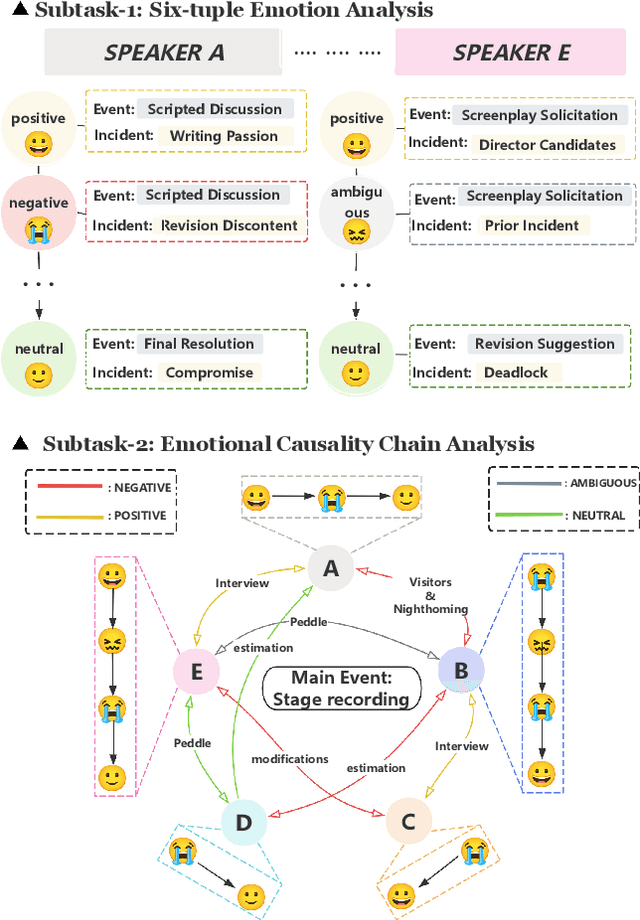
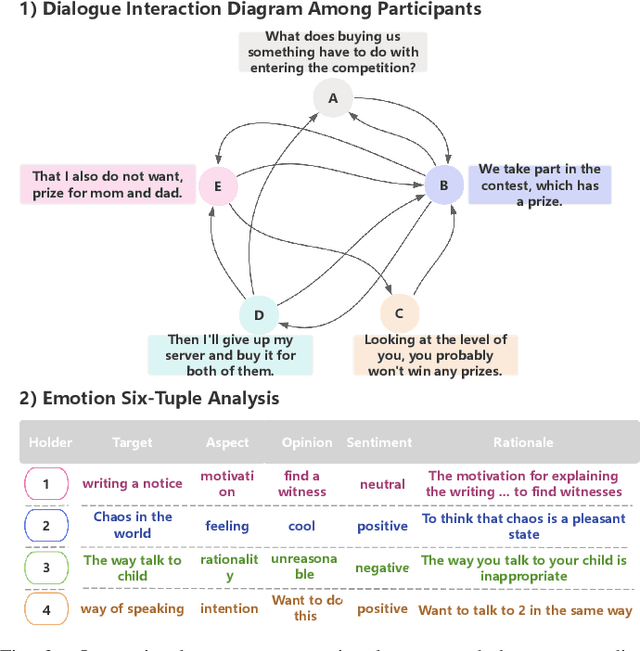
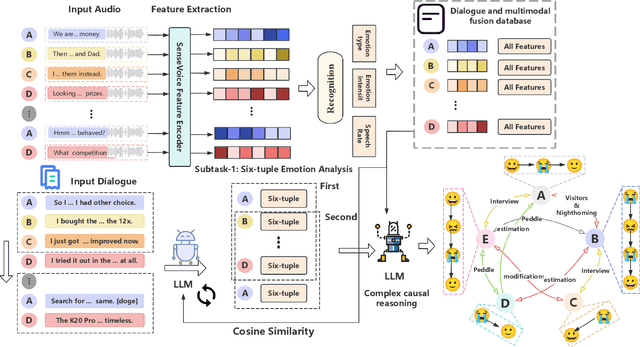
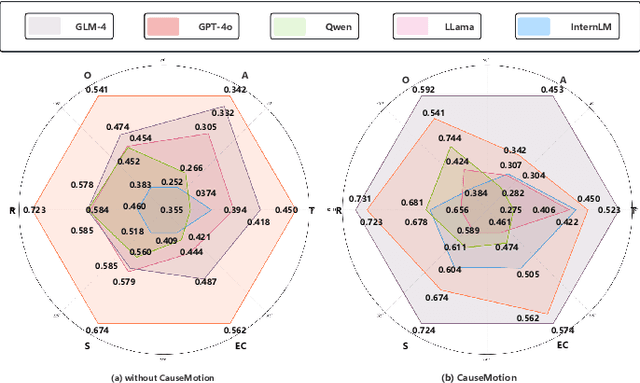
Abstract:Long-sequence causal reasoning seeks to uncover causal relationships within extended time series data but is hindered by complex dependencies and the challenges of validating causal links. To address the limitations of large-scale language models (e.g., GPT-4) in capturing intricate emotional causality within extended dialogues, we propose CauseMotion, a long-sequence emotional causal reasoning framework grounded in Retrieval-Augmented Generation (RAG) and multimodal fusion. Unlike conventional methods relying only on textual information, CauseMotion enriches semantic representations by incorporating audio-derived features-vocal emotion, emotional intensity, and speech rate-into textual modalities. By integrating RAG with a sliding window mechanism, it effectively retrieves and leverages contextually relevant dialogue segments, thus enabling the inference of complex emotional causal chains spanning multiple conversational turns. To evaluate its effectiveness, we constructed the first benchmark dataset dedicated to long-sequence emotional causal reasoning, featuring dialogues with over 70 turns. Experimental results demonstrate that the proposed RAG-based multimodal integrated approach, the efficacy of substantially enhances both the depth of emotional understanding and the causal inference capabilities of large-scale language models. A GLM-4 integrated with CauseMotion achieves an 8.7% improvement in causal accuracy over the original model and surpasses GPT-4o by 1.2%. Additionally, on the publicly available DiaASQ dataset, CauseMotion-GLM-4 achieves state-of-the-art results in accuracy, F1 score, and causal reasoning accuracy.
LLM$\times$MapReduce: Simplified Long-Sequence Processing using Large Language Models
Oct 12, 2024



Abstract:Enlarging the context window of large language models (LLMs) has become a crucial research area, particularly for applications involving extremely long texts. In this work, we propose a novel training-free framework for processing long texts, utilizing a divide-and-conquer strategy to achieve comprehensive document understanding. The proposed LLM$\times$MapReduce framework splits the entire document into several chunks for LLMs to read and then aggregates the intermediate answers to produce the final output. The main challenge for divide-and-conquer long text processing frameworks lies in the risk of losing essential long-range information when splitting the document, which can lead the model to produce incomplete or incorrect answers based on the segmented texts. Disrupted long-range information can be classified into two categories: inter-chunk dependency and inter-chunk conflict. We design a structured information protocol to better cope with inter-chunk dependency and an in-context confidence calibration mechanism to resolve inter-chunk conflicts. Experimental results demonstrate that LLM$\times$MapReduce can outperform representative open-source and commercial long-context LLMs, and is applicable to several different models.
X-Instruction: Aligning Language Model in Low-resource Languages with Self-curated Cross-lingual Instructions
May 30, 2024Abstract:Large language models respond well in high-resource languages like English but struggle in low-resource languages. It may arise from the lack of high-quality instruction following data in these languages. Directly translating English samples into these languages can be a solution but unreliable, leading to responses with translation errors and lacking language-specific or cultural knowledge. To address this issue, we propose a novel method to construct cross-lingual instruction following samples with instruction in English and response in low-resource languages. Specifically, the language model first learns to generate appropriate English instructions according to the natural web texts in other languages as responses. The candidate cross-lingual instruction tuning samples are further refined and diversified. We have employed this method to build a large-scale cross-lingual instruction tuning dataset on 10 languages, namely X-Instruction. The instruction data built using our method incorporate more language-specific knowledge compared with the naive translation method. Experimental results have shown that the response quality of the model tuned on X-Instruction greatly exceeds the model distilled from a powerful teacher model, reaching or even surpassing the ones of ChatGPT. In addition, we find that models tuned on cross-lingual instruction following samples can follow the instruction in the output language without further tuning.
VASA-1: Lifelike Audio-Driven Talking Faces Generated in Real Time
Apr 16, 2024



Abstract:We introduce VASA, a framework for generating lifelike talking faces with appealing visual affective skills (VAS) given a single static image and a speech audio clip. Our premiere model, VASA-1, is capable of not only producing lip movements that are exquisitely synchronized with the audio, but also capturing a large spectrum of facial nuances and natural head motions that contribute to the perception of authenticity and liveliness. The core innovations include a holistic facial dynamics and head movement generation model that works in a face latent space, and the development of such an expressive and disentangled face latent space using videos. Through extensive experiments including evaluation on a set of new metrics, we show that our method significantly outperforms previous methods along various dimensions comprehensively. Our method not only delivers high video quality with realistic facial and head dynamics but also supports the online generation of 512x512 videos at up to 40 FPS with negligible starting latency. It paves the way for real-time engagements with lifelike avatars that emulate human conversational behaviors.
NeuroPictor: Refining fMRI-to-Image Reconstruction via Multi-individual Pretraining and Multi-level Modulation
Mar 27, 2024Abstract:Recent fMRI-to-image approaches mainly focused on associating fMRI signals with specific conditions of pre-trained diffusion models. These approaches, while producing high-quality images, capture only a limited aspect of the complex information in fMRI signals and offer little detailed control over image creation. In contrast, this paper proposes to directly modulate the generation process of diffusion models using fMRI signals. Our approach, NeuroPictor, divides the fMRI-to-image process into three steps: i) fMRI calibrated-encoding, to tackle multi-individual pre-training for a shared latent space to minimize individual difference and enable the subsequent cross-subject training; ii) fMRI-to-image cross-subject pre-training, perceptually learning to guide diffusion model with high- and low-level conditions across different individuals; iii) fMRI-to-image single-subject refining, similar with step ii but focus on adapting to particular individual. NeuroPictor extracts high-level semantic features from fMRI signals that characterizing the visual stimulus and incrementally fine-tunes the diffusion model with a low-level manipulation network to provide precise structural instructions. By training with over 60,000 fMRI-image pairs from various individuals, our model enjoys superior fMRI-to-image decoding capacity, particularly in the within-subject setting, as evidenced in benchmark datasets. Project page: https://jingyanghuo.github.io/neuropictor/.
MulCogBench: A Multi-modal Cognitive Benchmark Dataset for Evaluating Chinese and English Computational Language Models
Mar 02, 2024Abstract:Pre-trained computational language models have recently made remarkable progress in harnessing the language abilities which were considered unique to humans. Their success has raised interest in whether these models represent and process language like humans. To answer this question, this paper proposes MulCogBench, a multi-modal cognitive benchmark dataset collected from native Chinese and English participants. It encompasses a variety of cognitive data, including subjective semantic ratings, eye-tracking, functional magnetic resonance imaging (fMRI), and magnetoencephalography (MEG). To assess the relationship between language models and cognitive data, we conducted a similarity-encoding analysis which decodes cognitive data based on its pattern similarity with textual embeddings. Results show that language models share significant similarities with human cognitive data and the similarity patterns are modulated by the data modality and stimuli complexity. Specifically, context-aware models outperform context-independent models as language stimulus complexity increases. The shallow layers of context-aware models are better aligned with the high-temporal-resolution MEG signals whereas the deeper layers show more similarity with the high-spatial-resolution fMRI. These results indicate that language models have a delicate relationship with brain language representations. Moreover, the results between Chinese and English are highly consistent, suggesting the generalizability of these findings across languages.
CrackCLF: Automatic Pavement Crack Detection based on Closed-Loop Feedback
Nov 20, 2023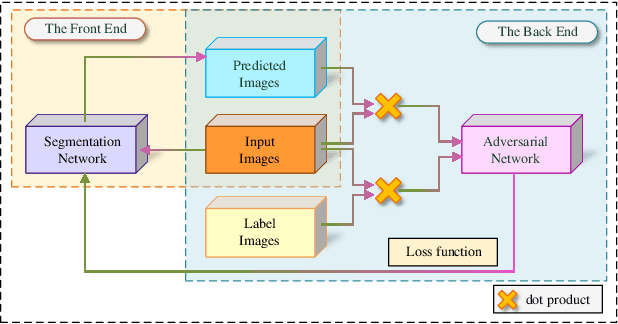


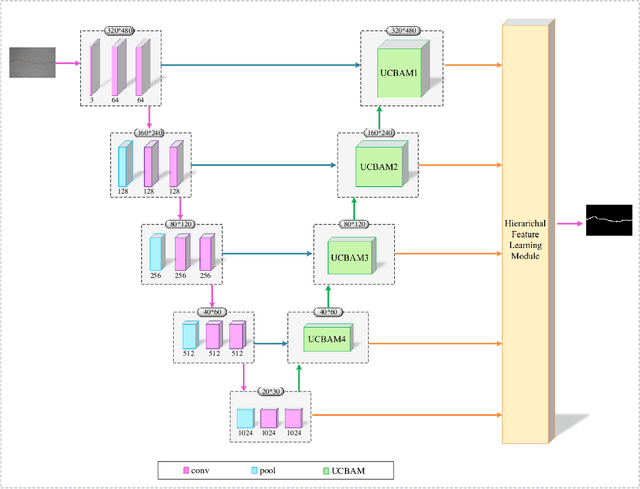
Abstract:Automatic pavement crack detection is an important task to ensure the functional performances of pavements during their service life. Inspired by deep learning (DL), the encoder-decoder framework is a powerful tool for crack detection. However, these models are usually open-loop (OL) systems that tend to treat thin cracks as the background. Meanwhile, these models can not automatically correct errors in the prediction, nor can it adapt to the changes of the environment to automatically extract and detect thin cracks. To tackle this problem, we embed closed-loop feedback (CLF) into the neural network so that the model could learn to correct errors on its own, based on generative adversarial networks (GAN). The resulting model is called CrackCLF and includes the front and back ends, i.e. segmentation and adversarial network. The front end with U-shape framework is employed to generate crack maps, and the back end with a multi-scale loss function is used to correct higher-order inconsistencies between labels and crack maps (generated by the front end) to address open-loop system issues. Empirical results show that the proposed CrackCLF outperforms others methods on three public datasets. Moreover, the proposed CLF can be defined as a plug and play module, which can be embedded into different neural network models to improve their performances.
Align after Pre-train: Improving Multilingual Generative Models with Cross-lingual Alignment
Nov 14, 2023Abstract:Multilingual generative models obtain remarkable cross-lingual capabilities through pre-training on large-scale corpora. However, they still exhibit a performance bias toward high-resource languages, and learn isolated distributions of sentence representations across languages. To bridge this gap, we propose a simple yet effective alignment framework exploiting pairs of translation sentences. It aligns the internal sentence representations across different languages via multilingual contrastive learning and aligns model outputs by answering prompts in different languages. Experimental results demonstrate that even with less than 0.1 {\textperthousand} of pre-training tokens, our alignment framework significantly boosts the cross-lingual abilities of generative models and mitigates the performance gap. Further analysis reveals that it results in a better internal multilingual representation distribution of multilingual models.
 Add to Chrome
Add to Chrome Add to Firefox
Add to Firefox Add to Edge
Add to Edge